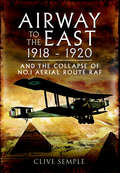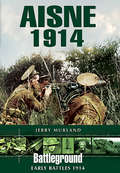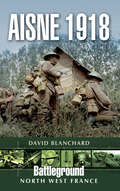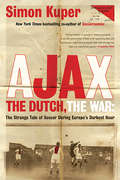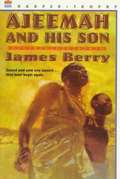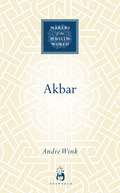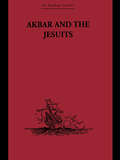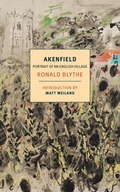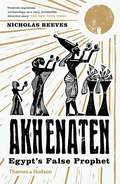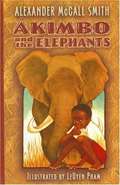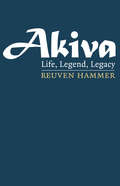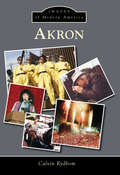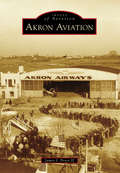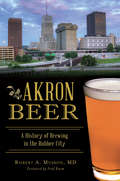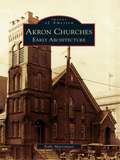- Table View
- List View
Airway to the East, 1918–1920: And the Collapse of No.1 Aerial Route RAF
by Clive SempleThe origins of what became officially known as No 1 Aerial Route lay in the newly formed Royal Air Forces desire to move several squadrons of the then recently designed first heavy bomber to enter service the Handley Page O/400, to the war in the Middle-East. The aircraft had served on the Western Front with some success, although not in the long-range capacity. During the spring of 1918, the Wing Commander of No 5 Wing, Billy Borton, requested that one of the HP O/400 aircraft be flown to Egypt. This was approved by Major General Sir Frederick Sykes. Before the flight could proceed a great deal of planning was required since the aircrafts maximum range was only 600 miles. Several refueling and maintenance bases along the route were required. When planned in 1918 the route was from Paris Lyons, Istres, Pisa, Rome, Barletta, Taranto, Athens, Crete, Mersa Matru and finally Cairo. Each landing station would require fuel, spares, and communications and back-up personnel. On July 50.00 1918 a new HPO/400 set off from Manston in Kent with Borton and his pilot Major McLaren plus two crew. After a comparatively trouble-free flight the bomber arrived in Aboukir, Alexandria on the evening of 7 August. As a result, the RAF decided to use this route to fly several squadrons of the Handley Page bombers shortly after the war had ended. The Arab leaders had found out that the Allies promise that the captured Turkish lands would be returned to them was a duplicitous lie and that France and Great Britain would take control of the area. This quite naturally lead to massive unrest and rioting throughout the middle-eastern lands. The bombers were needed to quell the rioting and sabotage that had broken out. Thus, on 3 May 1919 58 Squadron set of from France on No 1 Aerial Route. It was a premature departure since many of the refueling airfields along the route were not prepared for there incoming customers. Chaos ensued by 1 November Three Squadrons had been dispatched. Of the 51 bombers sent only 26 had arrived, ten were stuck en-route and 15 had been written-off as broken or lost at sea and 11 aircrew had perished.This is the story of the development of the route. It would eventually form the first stage of the Imperial Air Route to Australia.
Aisne 1914: The Bef And The Birth Of The Western Front (Battleground Early Battles 1914)
by Jerry MurlandThe 1914 Battle of the Aisne, officially from 12 15 September, came about as a result of the German retirement from the Battle of the Marne, which took place further south as the huge conscript armies of France and Germany jostled for position almost within sight of Paris. By the time the British arrived on the Aisne the battle line stretched some 150 miles from Noyon in the west to Verdun in the east and it was only along a tiny fifteen mile sector in the middle that the The British Expeditionary Force was engaged. However, it fought bitter engagements, which took place in difficult conditions and casualties were heavy. The Aisne fighting was the final attempt by the allies to follow through from the success of the Marne. It also marked the successful establishment by the Germans of a sound defensive line on this part of the front.As seen in 'Scale Military Modelling Monthly'.
Aisne 1918 (Battleground North West France)
by David BlanchardThis battlefield guide and history will focus mainly on the events of attack that fell on the British sector of the front between the 27th 1st June 1918, although the offensive which also befell the French forces will not be totally neglected. This area had been a French held sector since 1915 and the French had fought one of its major engagements of the war here in 1917, the ill-fated Nivelle Offensive. French monuments and cemeteries dominate the landscape. The British were also here in 1914, and they too have left reminders of their relative brief presence. However, the actions fought here early in the war tend to be found mainly to the west of the sector. The battlefield of May 1918 scales the heights of the Chemin des Dames ridge, along the Californe Plateau and descends to afforested valley of the Aisne river and canal. The retreat of the Britsh forces during the course of the first day and in following days extends further south almost to the Marne and takes in part of the Champagne region.
Ajax, The Dutch, The War: Football in Europe During the Second World War
by Simon KuperThe Holocaust, Dutch football and World War II - from the bestselling author of the award-winning FOOTBALL AGAINST THE ENEMY.In FOOTBALL AGAINST THE ENEMY Simon Kuper crossed the globe in search of the links between football, politics and culture. In AJAX, THE DUTCH, THE WAR he skilfully pieces together an alternative account of World War II. He looks at the lives of the footballers who played for the Dutch club, the officials and the ordinary fans during this tumultuous period and challenges the accepted notion of the War in occupied Europe. With almost 80 per cent of Amsterdam's Jewish Corner wiped out during the war, the long-held belief that, by and large, half the Dutch population had some kind of link to the Resistance has, of late, come into question. Kuper explores this issue and looks deeper into the role of football across Europe in the years both preceding and following the War. The result is a compelling and controversial account of the War, seen through the lens of football.
Ajax, The Dutch, The War: Football in Europe During the Second World War
by Simon Kuper'Football history at its best' SCOTLAND ON SUNDAY'Hugely moving... a very good book indeed' FOUR FOUR TWO'Kuper is an original, sophisticated and adventurous writer. The story he has to tell... is fascinating and pressing' SUNDAY TIMESIn FOOTBALL AGAINST THE ENEMY Simon Kuper crossed the globe in search of the links between football, politics and culture. In AJAX, THE DUTCH, THE WAR he skilfully pieces together an alternative account of World War II. He looks at the lives of the footballers who played for the Dutch club, the officials and the ordinary fans during this tumultuous period and challenges the accepted notion of the War in occupied Europe. With almost 80 per cent of Amsterdam's Jewish Corner wiped out during the war, the long-held belief that, by and large, half the Dutch population had some kind of link to the Resistance has, of late, come into question. Kuper explores this issue and looks deeper into the role of football across Europe in the years both preceding and following the War. The result is a compelling and controversial account of the War, seen through the lens of football.
Ajax, the Dutch, the War: The Strange Tale Of Soccer During Europe's Darkest Hour
by Simon KuperUpdated with a new afterword. In FOOTBALL AGAINST THE ENEMY Simon Kuper crossed the globe in search of the links between football, politics and culture. In AJAX, THE DUTCH, THE WAR he skilfully pieces together an alternative account of World War II. He looks at the lives of the footballers who played for the Dutch club, the officials and the ordinary fans during this tumultuous period and challenges the accepted notion of the War in occupied Europe. With almost 80 per cent of Amsterdam's Jewish Corner wiped out during the war, the long-held belief that, by and large, half the Dutch population had some kind of link to the Resistance has, of late, come into question. Kuper explores this issue and looks deeper into the role of football across Europe in the years both preceding and following the War. The result is a compelling and controversial account of the War, seen through the lens of football.
Ajeemah and His Son
by James BerryIn 1807, at the height of the slave trade, Ajeemah and his son, Atu, are snatched by slave traders from their home in Africa while en route to deliver a dowry to Atu's bride-to-be. Ajeemah and Atu are then taken to Jamaica and sold to neighboring plantations'never to see one another again. "Readers will come away with a new sense of respect for those who maintained their dignity and humanity under the cruelest of circumstances. "'SLJ. "Each moment here of the Jamaican-born poet's terse, melodious narrative is laden with emotion. . . . Brilliant, complex, powerfully written. "--K. Notable Children's Book of 1993 (ALA) 1993 Best Books for Young Adults (ALA) 1993 Fanfare Honor List (The Horn Book) 1992 Books for Youth Editors' Choices (BL) Notable 1992 Children's Trade Books in Social Studies (NCSS/CBC) Bulletin Blue Ribbons 1992 (C) 1993 Books for the Teen Age (NY Public Library) Children's Books of 1992 (Library of Congress) 1993 Boston Globe-Horn Book Fiction Award
Ajey - Duryodhanache Mahabharat: अजेय - दुर्योधनाचे महाभारत
by Anand Neelakanthan"अजेय - दुर्योधनाचे महाभारत" ही आनंद नीलकंठन यांची मराठीत अनुवादित कादंबरी आहे, जी "Ajaya: Roll of the Dice" या इंग्रजी कादंबरीचा अनुवाद आहे. ही कादंबरी महाभारतातील एक महत्त्वाची व्यक्तिरेखा असलेल्या दुर्योधनाच्या दृष्टीकोनातून लिहिलेली आहे. पारंपारिक कथांमध्ये जिथे दुर्योधनाला खलनायक म्हणून दाखवले जाते, तिथे नीलकंठन यांनी त्याला एका जटिल आणि विरोधाभासी व्यक्तिरेखेच्या रूपात सादर केले आहे. कादंबरीत दुर्योधनाचे बालपण, त्याची कौरव-पांडवांशी असलेली मैत्री आणि स्पर्धा, त्याचे शिक्षण, आणि त्याचे दृष्टिकोन यांचा सखोल अभ्यास केला आहे. लेखकाने कौरवांच्या बाजूने कथानक मांडले आहे, जिथे दुर्योधन एक न्यायप्रिय आणि धर्मनिष्ठ योद्धा म्हणून समोर येतो. त्याच्या भावनांचा, त्याच्या निर्णयांचा, आणि त्याच्या कार्यांचा मागोवा घेत, कादंबरी त्याच्या मनोवृत्तीला आणि महाभारताच्या घटनांवर त्याच्या दृष्टिकोनाला प्रकाशात आणते. कादंबरीत कर्ण, भीष्म, द्रोण, आणि कृष्ण या व्यक्तिरेखांचाही उल्लेख आहे, ज्यांच्याशी दुर्योधनाचे संबंध महाभारताच्या कथानकाचा भाग बनतात. ही कादंबरी पारंपारिक महाभारताच्या कथनात एक वेगळा दृष्टिकोन जोडते आणि वाचकांना दुर्योधनाच्या दृष्टिकोनातून एक वेगळा आणि नवीन दृष्टिकोन देते.
Ajoelhado Aos Teus Pés
by Tanya Anne Crosby Tânia NezioUma filha da floresta, sem ser leal a nenhum clã, diziam que Seana era uma filha das fadas, mas nem mesmo um pouco da magia Celta podia ajudá-la a ter o que ela realmente desejava — uma casa e uma lareira... antes que fosse tarde demais para seu pai enfermo. Seana colocava todas suas esperanças em Broc Ceannfhionn, mas o coração de Broc pertencia à outra. Para ganhar o coração de Broc, ela fez um acordo com Colin Mac Brodie — o maior malandro em toda a Escócia. Embora Colin já tivesse quebrado uma vez o coração de Seana... desta vez, ele estava impotente para resistir a garota que ele já tinha evitado... e se descobre de uma maneira que ele nunca tinha pensado ficar... “Ajoelhado Aos Teus Pés”
Akbar
by MugilA biography of Akbar the Great, the third Mughal Emperor who reigned his Mughal empire between 1542 A.D. – 1605 A.D., covering most of the northern and central India.
Akbar (Makers of the Muslim World)
by Andre WinkWidely regarded as the greatest of the Mughal emperors, Jalal ad-Din Akbar (1542-1603) was a formidable military tactician and popular demagogue. Ascending to the throne at the age of thirteen, he ruled for half a century, expanded the Mughal empire, and left behind a legacy to rival his infamous ancestors Chinggis Khan and Timur. In this lucid biography, Andre Wink provides glimpses into Akbar's daily life and highlights his contribution to new methods of imperial control and record-keeping. Andre Wink is Professor of History at the University of Wisconsin-Madison.
Akbar Ki Mrityu Ke Samay Ka Bharat
by W. H. MorlandThe book gives an outline of the life in the beginning of 17th century India. A fantastic attempt by the writer to see the future from the mirrors of present. A wonderful reading for researchers in Indian history.
Akbar Se Aurangzeb Tak
by W. H. MorlandThe second stage of the Economic history has been described in this book. It details the ousting of the Portuguese from Indian by Dutch and English. It gives a detailed analysis of the economic history of the times.
Akbar and the Jesuits: An Account of the Jesuit Missions to the Court of Akbar
by Father Pierre JarricFirst published in 1926.'These documents are full of intimate interest' Times Literary Supplement'A serious and intensely interesting piece of work' The GuardianThe Jesuit missionaries were some of the earliest Europeans to find their way into the Mogul empire in the sixteenth century. Spending more years at Akbar's court than others did months, and traversing his dominions from Lahore to Kabul, and from Kashmir to the Deccan, they undoubtedly sowed the seeds of British influence in the East.Reproducing, or summarizing the most valuable of the missionaries' letters written prior to 1610, this volume makes available the illegible and scattered primary sources on the reign of the Emperor Akbar, and as such, forms the earliest European description of the Mogul Empire.
Akbar the Great and Other Stories
by Rajee Raman10 stories of Akbar the Great and other Indian rulers
Akenfield
by Ronald Blythe Matt WeilandWoven from the words of the inhabitants of a small Suffolk village in the 1960s, Akenfield is a masterpiece of twentieth-century English literature, a scrupulously observed and deeply affecting portrait of a place and people and a now vanished way of life. Ronald Blythe's wonderful book raises enduring questions about the relations between memory and modernity, nature and human nature, silence and speech.
Akhenaten: Egypt's False Prophet
by Nicholas ReevesNicholas Reeves’s radical interpretation of a revolutionary king—now available in paperback. One of the most compelling and controversial figures in ancient Egyptian history, Akhenaten has captured the imagination like no other Egyptian pharaoh. Much has been written about this strange, persecuted figure, whose depiction in effigies is totally at odds with the traditional depiction of the Egyptian ruler-hero. Akhenaten sought to impose upon Egypt and its people the worship of a single god—the sun god—and in so doing changed the country in every way. In Akhenaten, Nicholas Reeves presents an entirely new perspective on the turbulent events of Akhenaten’s seventeen-year reign. Reeves argues that, far from being the idealistic founder of a new faith, the Egyptian ruler cynically used religion for political gain in a calculated attempt to reassert the authority of the king and concentrate all power in his hands. Backed by abundant archaeological and documentary evidence, Reeves’s narrative also provides many new insights into questions that have baffled scholars for generations—the puzzle of the body in Tomb 55 in the Valley of the Kings; the fate of Nefertiti, Akhenaten’s beautiful wife; the identity of his mysterious successor, Smenkhkare; and the theory that Tutankhamun, Akhenaten’s son and heir to the throne, was murdered.
Akimbo And The Elephants
by Alexander Mccall SmithTen-year-old Akimbo lives on a game preserve in Africa. His father is the head ranger, and Akimbo is eager to help him whenever he can--even if it means getting into some pretty dangerous situations. In Akimbo and the Elephants, ivory poachers are killing grown elephants for their tusks and leaving the calves to die. When the authorities fail to turn up new leads, Akimbo sets out to save the elephants by posing as a hunter himself.
Akin: A Novel
by Emma DonoghueThe next masterpiece by the New York Times bestselling author of Room: A retired professor's life is thrown into chaos when he takes his great-nephew to the French Riviera Noah Selvaggio is a retired chemistry professor and widower living on the Upper West Side, but born in the South of France. He is days away from his first visit back to Nice since he was a child, bringing with him a handful of puzzling photos he's discovered from his mother's wartime years. But he receives a call from social services: Noah is the closest available relative of an eleven-year-old great-nephew he's never met, who urgently needs someone to look after him. Out of a feeling of obligation, Noah agrees to take Michael along on his trip. Much has changed in this famously charming seaside mecca, still haunted by memories of the Nazi occupation. The unlikely duo, suffering from jet lag and culture shock, bicker about everything from steak frites to screen time. But Noah gradually comes to appreciate the boy's truculent wit, and Michael's ease with tech and sharp eye help Noah unearth troubling details about their family's past. Both come to grasp the risks people in all eras have run for their loved ones, and find they are more akin than they knew.Written with all the tenderness and psychological intensity that made Room an international bestseller, Akin is a funny, heart-wrenching tale of an old man and a boy, born two generations apart, who unpick their painful story and start to write a new one together.
Akira To Zoltan: Twenty-Six Men Who Changed The World
by Cynthia Chin-Lee Megan Halsey Sean AddyThis companion to the best-selling AMELIA TO ZORA features twenty-six amazing men. From Akira Kurisawa, filmmaker, to Zoltán Kodály, musical innovator, learn what inspired each man to change the world around him. Detailed collages draw from various events in the men's lives.
Akiva: Life, Legend, Legacy
by Rabbi Reuven HammerThe legendary Akiva ben Yosef has fascinated Jews for centuries. Arguably the most important of the Tannaim, or early Jewish sages, Akiva lived during a crucial era in the development of Judaism as we know it today, and his theology played a major part in the development of Rabbinic Judaism. Reuven Hammer details Akiva’s life as it led to a martyr’s death and he delves into the rich legacy Akiva left us. That legacy played an extraordinarily important role in helping the Jewish people survive difficult challenges to forge a vibrant religious life anew, and it continues to influence Jewish law, ethics, and theology even today. Akiva’s contribution to the development of Oral Torah cannot be overestimated, and in this first book written in English about the sage since 1936 Hammer reassesses Akiva’s role from the period before the destruction of the Temple in 70 CE until the Bar Kokhba revolt in 135 CE. He also assesses new findings about the growth of early Judaism, the reasons why Akiva was so outspoken about “Christian Jews,” the influence of Hellenism, the Septuagint, and the canonization of the Hebrew Bible. Ultimately Hammer shows that Judaism without Akiva would be a very different religion.
Akron
by Calvin RydbomOnce known as the "Rubber Capital of the World," Akron now hails as the "City of Invention." As the fifth-largest city in Ohio, it has grown from an industrial center to a hub of culture and science. During this change, Akron's downtown went from a vibrant retail district to being somewhat empty; however, the city was reborn with a baseball stadium for the Akron RubberDucks (the Double-A affiliate of the Cleveland Indians), new restaurants, concert venues, and in its role as a host for national events such as the 2014 Gay Games. As recently as 20 years ago, rubber workers made up a large part of Akron's population, but the number of people employed in the rubber industry dropped by half between 2000 and 2007. In 2001, Akron was named among the country's 10 high-tech havens by Newsweek, and it is now considered the center of "Polymer Valley."
Akron Aviation (Images of Aviation)
by James I. Pryor IIEveryone loves a good adventure story. The history of Akron aviation provides all the real-life pathos of any adventure novel. It all began in 1875, when a young farmer named Jack C. Johnston launched himself and his balloon on one of the wildest flights ever recorded. In 1906, John Gammeter, an Akron inventor, built his own airplane and began making regular flights over the city. In Akron, the Goodyear Tire and Rubber Company saw the future of air commerce and would go on to write its own chapter in aviation history on a global scale. The story of Akron aviation is one of incredible triumphs and unspeakable tragedies. It is the story of men and women determined to conquer the air. Akron aviation matured along with the city, and the two intertwined to become a major influence in northern Ohio as well as the country.
Akron Beer: A History of Brewing in the Rubber City
by Robert A. Fred KarmOnce known as the Rubber Capital of the World, Akron can also justifiably style itself a beer mecca. More than a century ago, brewers like Renner, Burkhardt and others vied for local supremacy. Although these forerunners disappeared, a beer renaissance blossomed in recent years, with today's craft purveyors serving up some of the nation's finest brews. Several of Thirsty Dog Brewery's beers have won awards, and Hoppin' Frog consistently ranks as one of the top one hundred breweries in the world. Rob Musson presents a chronological look at Akron beer from its origins along the Ohio & Erie Canal in 1845 to the present day, featuring one hundred vintage and contemporary images.
Akron Churches: Early Architecture
by Kally MavromatisThe history of Akron begins with the building of the great Ohio and Erie Canal. The financial incentives offered to workers building the canal brought men from all over to build the great "ditch," and as they and their families settled in Akron, they also began to build magnificent churches and cathedrals that became the heart of their communities. With roots stretching back to the early 1800s, many of the churches that stand today are more than a century old and in many instances are the second or third church to be built by their congregations. Each successive church more grand than the last, these edifices were literally built with the pennies, nickels, and dimes of their members, who built structures that reflected the prevailing architectural styles of the day. Many of the churches have been lost to time, but many of these architectural treasures remain and continue to stand as testament to the overwhelming desire of the faithful to build churches that reflect the glory of God.
